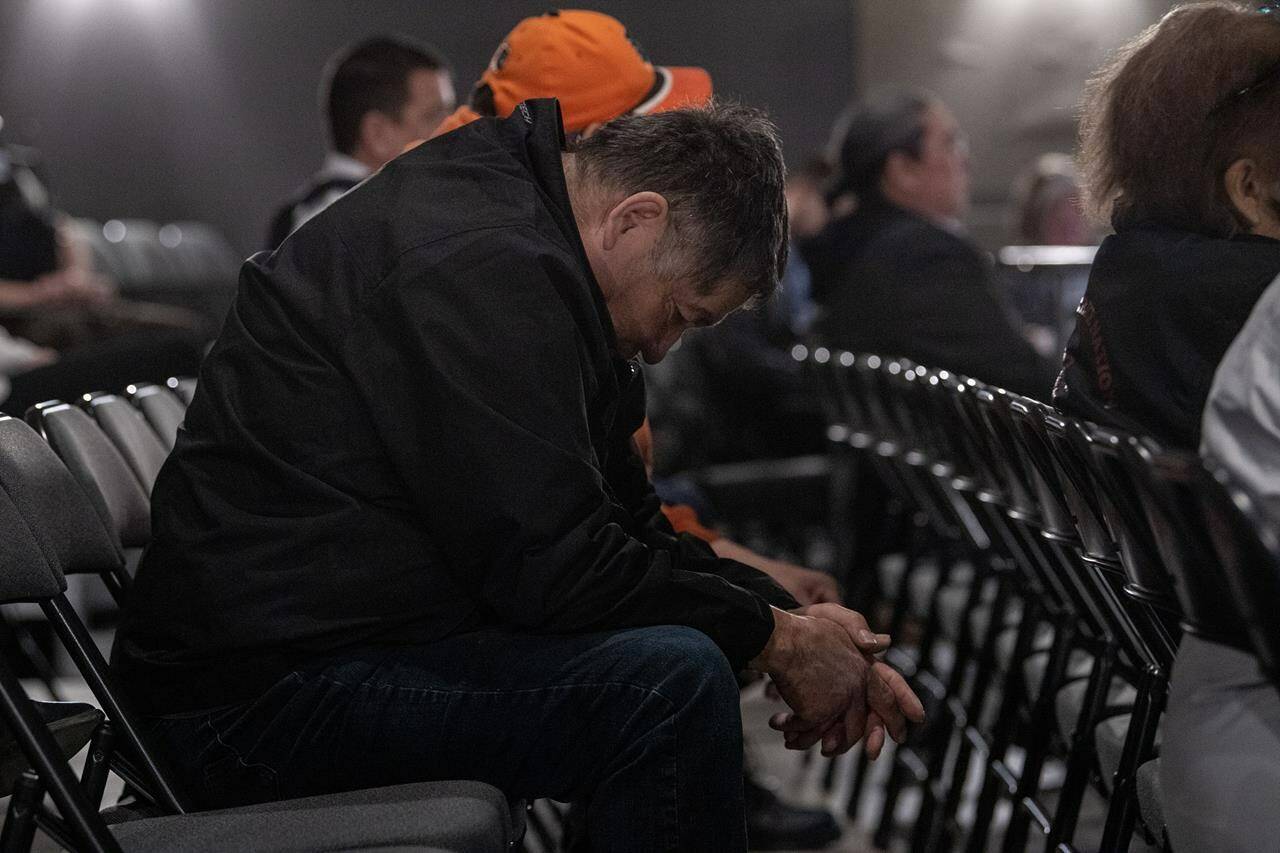Chiefs representing a Saskatchewan First Nation that was the site of a mass killing last year offered condolences and prayers Monday as part of a traditional healing gathering.
Chief Robert Head of Peter Chapman First Nation, one of three bands that make up James Smith Cree Nation, told a crowd that the stabbing rampage affected so many.
“Each and every one of us lost family members that day on Sept. 4 and, not only that, but all of the membership here, all the families here that had tended to their loved ones that day (were) all traumatized, by the sights, the chaos, the devastation of that day,” Head said.
Eleven people were killed and 17 were injured on the First Nation and in the nearby village of Weldon. Myles Sanderson, the 32-year-old killer, died in police custody a few days later.
James Smith Cree Nation Chief Wally Burns said up to 3,000 people from across North America were expected to be in the community north of Saskatoon this week to take part in spiritual and traditional healing practices.
The four-day event began Monday with a grand entry and flag-raising ceremony.
Burns encouraged people to speak with healers and educators. He said it’s important to listen to elders’ stories.
“We’re here with resilience,” Burns said, “and also, give that sense of pride that we’re here and make sure we bring up our youth in the right way.”
The chiefs said they were thankful for the outpouring of support they have received.
“In the past year, I’ve been hearing the resilience of our First Nations in our community,” said Chief Calvin Sanderson of the Chakastaypasin Band.
“I’ve got to commend our response team and our members who were out that day, that morning. We went through lots of grievance and how to be resilient, come back strong and carry on that flame for our relatives.”
The chiefs also thanked those who assisted the community after the killings, including RCMP, paramedics, volunteers, businesses and governments.
Earlier this year, RCMP laid out a timeline of the chaos before and during the stabbing rampage. Mounties said Sanderson moved from house to house on the First Nation, attacking people and stealing vehicles.
Assistant Commissioner Rhonda Blackmore, commanding officer of the Saskatchewan RCMP, said at the time that she understands people have many questions about how the mass killing could have happened.
“Some of those answers, unfortunately, may never be known.”
Two coroner’s inquests are set for early next year. One of the inquests is to focus on the killings, while the other is to look into the killer’s death in custody.
READ ALSO: Victim of Saskatchewan stabbings described as “hero and true matriarch”
READ ALSO: ‘Starting to heal’: Victim of Saskatchewan mass stabbing wakes in hospital a widow

